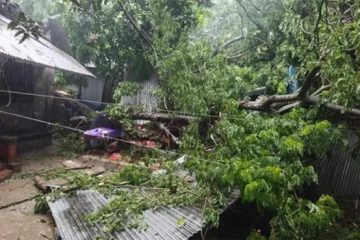NEW DELHI: More than 100 million people have joined the ranks of the chronically hungry in South Asia in the fallout from the global financial crisis, bringing the figure to a 40-year high, a U.N. official said Tuesday, reports AP.
The region”s poor, who have borne the brunt of the economic trouble, desperately need governments to spend more money on food, health care and education to alleviate the crisis, said Daniel Toole, a regional director for the U.N. Children”s Fund, or UNICEF. At least 405 million people in South Asia suffered from chronic hunger in 2007-2008, up from 300 million in 20004-2006, according to a UNICEF report Tuesday.
“Without urgent, inclusive government response, the poor of South Asia, nearly 20 percent of the world”s population, will sink further into poverty and malnutrition with long-term negative consequences for growth and development in the region and globally,” the report said.
The report focused on the economic crisis”s impact on women and children in eight South Asian nations – Afghanistan, Bangladesh, Bhutan, India, the Maldives, Nepal, Pakistan and Sri Lanka. Nearly 33 percent of South Asia”s 1.8 billion people eat less than the minimum recommen-ded daily requirements. Three-quarters live in households earning less than $2 a day, the report said. The poor spend more than half of their income on food, which has become more expensive and made life even more difficult for them, it said. Nearly half of the region”s children are malnourished. Toole called on India and Pakistan, longtime rivals in the region, to urgently reduce their defense spending and increase their social investments.
The two nations have long spent relatively little on education and health while spending billions on their militaries, which have fought three wars against each another.
Defense accounted for 18 percent of government
spending in Pakistan and 14 percent in India between 1997 and 2006, UNICEF said. Education accounted for less than 4 percent and health care received 2 percent in the same period, the agency said. The agency called on India and Pakistan to emulate China, which spent 8-10 percent of government money on education and health over the past three decades, allowing rural and impoverished communities access to hospitals and schools, Toole said.




















